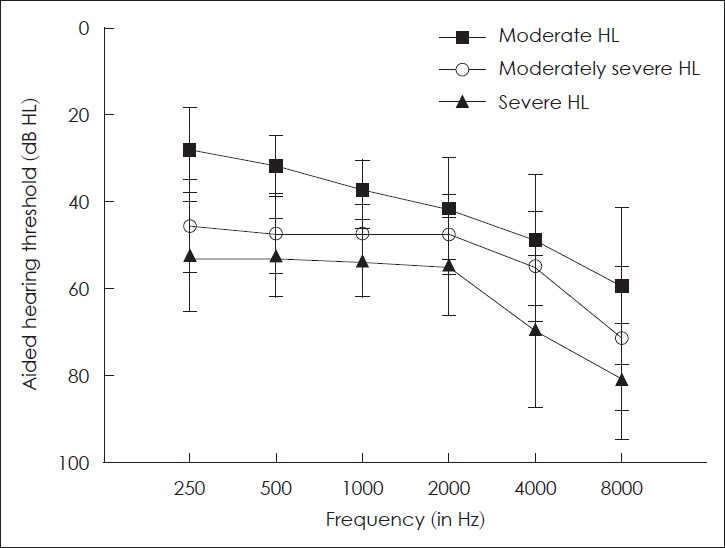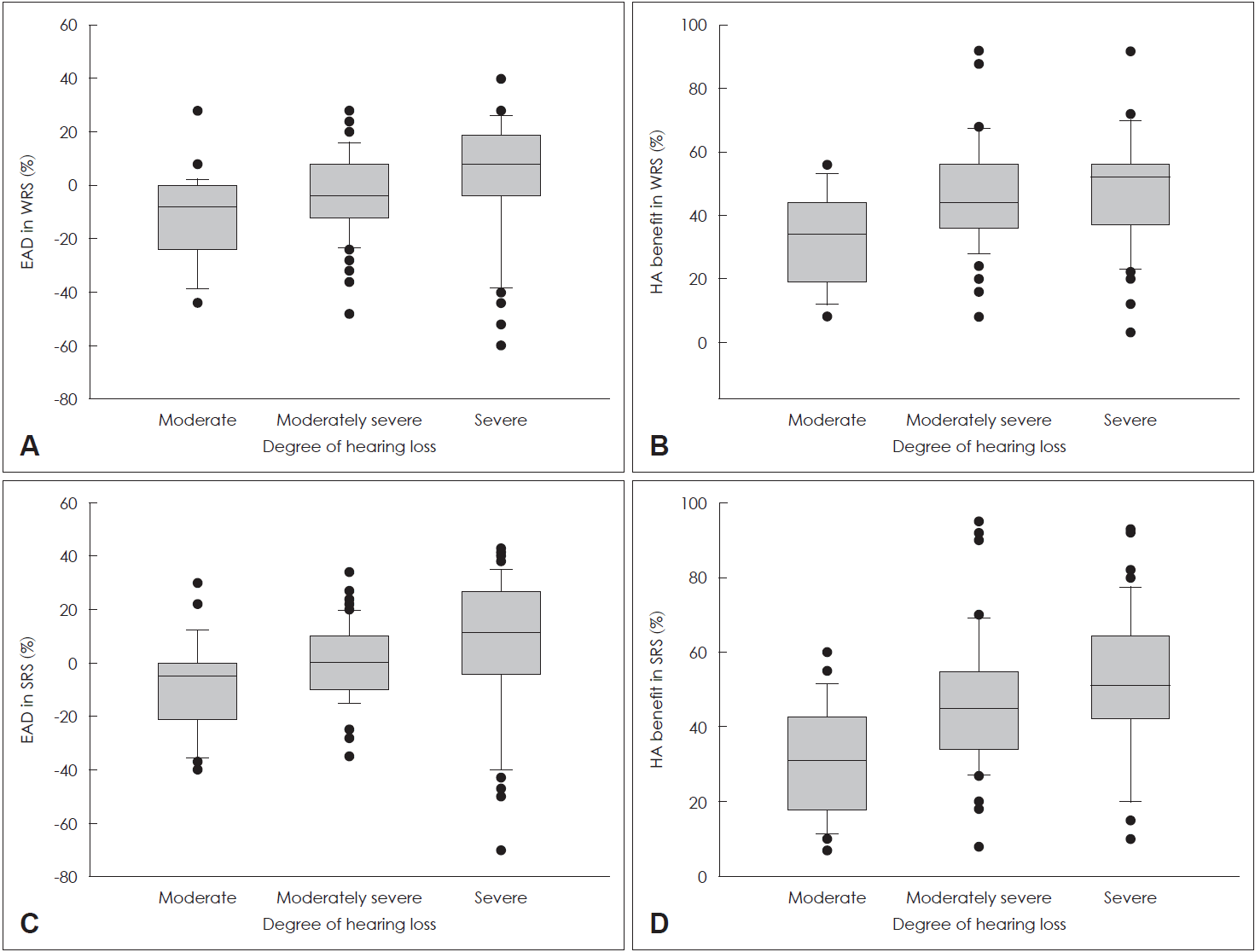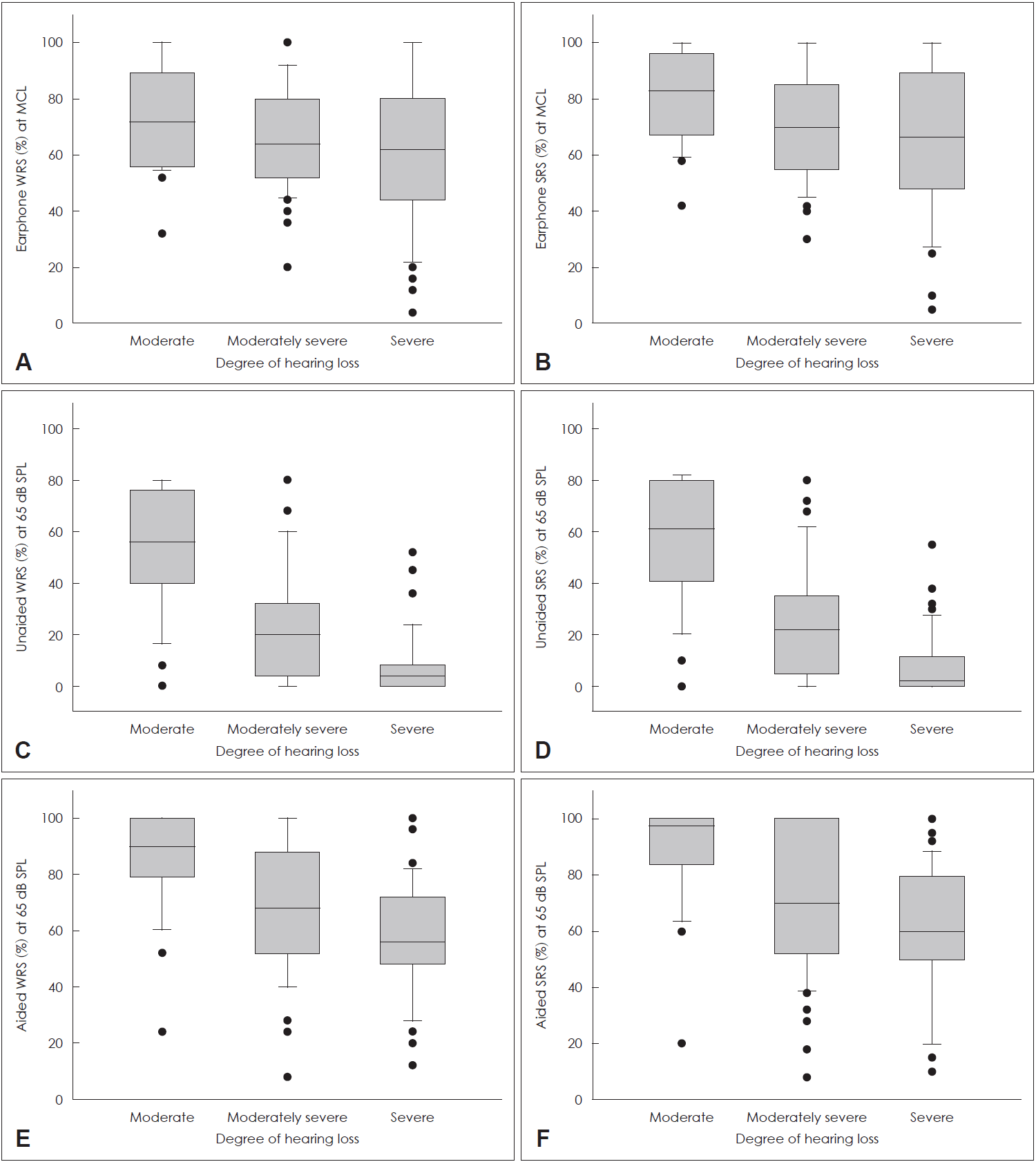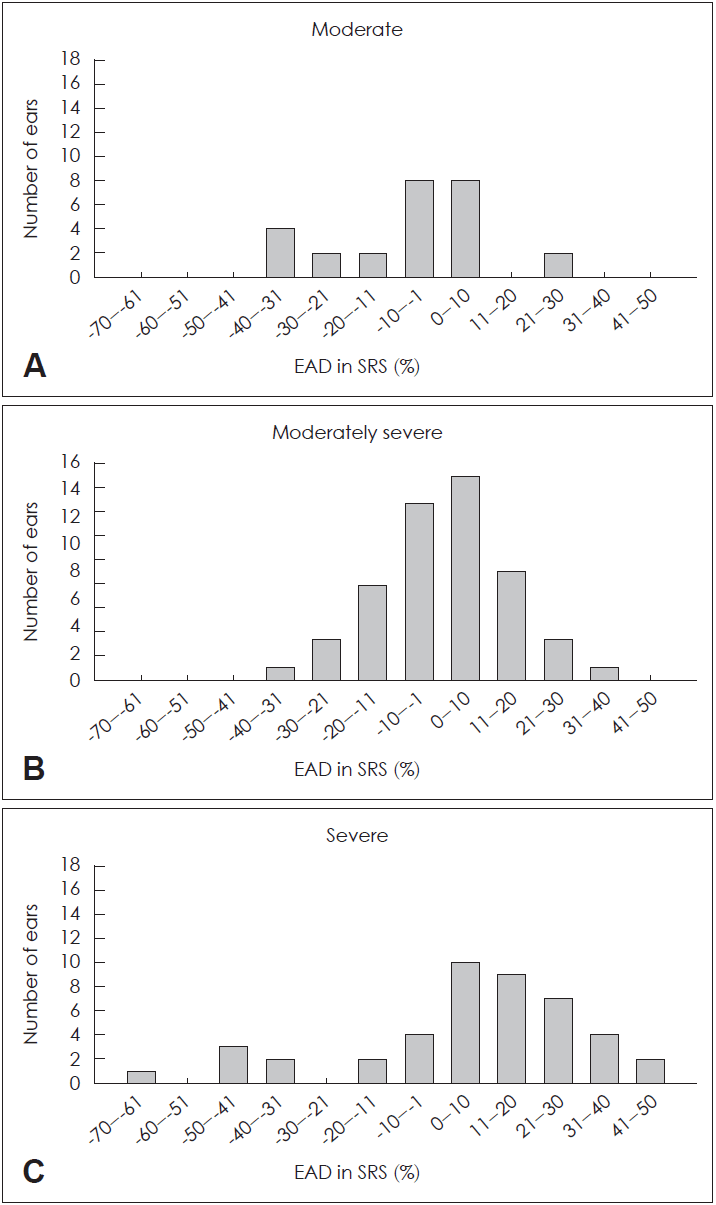1. Humes LE. Dimensions of hearing aid outcome. J Am Acad Audiol. 1999; 10(1):26–39.
2. Jorgensen LE. Verification and validation of hearing aids: Opportunity not an obstacle. J Otol. 2016; 11(2):57–62.

3. International Organization for Standardization. Acoustics: audiometric test methods. Part 2: Sound field audiometry with puretone and narrow-band test signals (ISO 8253-2:2009). Geneva: International Organization for Standardization;2009.
5. International Electrotechnical Commission. Electroacoustics–Hearing Aids–Part 15: Methods for characterising signal processing in hearing aids with a speech-like signal (IEC 60118-15:2012). Geneva: International Electrotechnical Commission;2012.
6. Humes LE, Christensen L, Thomas T, Bess FH, Hedley-Williams A, Bentler R. A comparison of the aided performance and benefit provided by a linear and a two-channel wide dynamic range compression hearing aid. J Speech Lang Hear Res. 1999; 42(1):65–79.

7. Han YK, Lee K. A study on the Korean conversation speech level and spectrum in sound-treated environment. Audiol Speech Res. 2020; 16(2):133–39.

8. McRackan TR, Ahlstrom JB, Clinkscales WB, Meyer TA, Dubno JR. Clinical implications of word recognition differences in earphone and aided conditions. Otol Neurotol. 2016; 37(10):1475–81.

9. McRackan TR, Fabie JE, Burton JA, Munawar S, Holcomb MA, Dubno JR. Earphone and aided word recognition differences in cochlear implant candidates. Otol Neurotol. 2018; 39(7):e543–9.

10. McRackan TR, Clinkscales WB, Ahlstrom JB, Nguyen SA, Dubno JR. Factors associated with benefit of active middle ear implants compared to conventional hearing aids. Laryngoscope. 2018; 128(9):2133–8.

11. Hoppe U, Hocke T, Hast A, Iro H. Maximum monosyllabic score as a predictor for cochlear implant outcome. HNO. 2019; 67(3):199–206.
12. Chu H, Cho YS, Park SN, Byun JY, Shin JE, Han GC, et al. Standardization for a Korean adaptation of the international outcome inventory for hearing aids: Study of validity and reliability. Korean J Otorhinolaryngol-Head Neck Surg. 2012; 55(1):20–5.

13. Kim HJ, Lee JH, Shim HJ. Effect of digital noise reduction of hearing aids on music and speech perception. J Audiol Otol. 2020; 24(4):180–90.

14. International Organization for Standardization. Acoustics-Audiometric test methods-Part 1: Pure-tone air and bone coundction audiometry (ISO 8253-1:2010). Geneva: International Organization for Standardization;2010.
15. Lawson GD, Peterson M. Speech audiometry. San Diego, CA: Plural Publishing, Inc;2011.
16. Lee JH, Cho SJ, Kim JS, Jang HS, Lim DH, Lee KW, et al. Korean speech audiometry (KSA). Seoul: Hakjisa;2010.
17. Yoo B, Lee J. Prediction interval of word recognition score using Korean Standard Monosyllabic Word Lists for Adults (KS-MWL-A). Audiol. 2014; 10(1):35–42.
18. Lee J, Lee KW, Lee JH, Bahng J, Kim J, Choi CH, et al. Test-retest reliability of sentence recognition score using Korean standard sentence lists for adults (KS-SL-A). Audiol. 2015; 11(1):17–25.
19. Ochs MT. Revising the routine audiologic test battery to examine sources of interpatient variability. J Am Acad Audiol. 1990; 1(4):217–26.
20. Crandell CC. Individual differences in speech recognition ability: Implications for hearing aid selection. Ear Hear. 1991; 12(6 Suppl):100S–8.
21. Cord MT, Leek MR, Walden BE. Speech recognition ability in noise and its relationship to perceived hearing aid benefit. J Am Acad Audiol. 2000; 11(9):475–83.
22. Lee JH, Yi DW. A comparison of adaptive sentence-in-noise tests. Audiol Speech Res. 2017; 13(1):9–18.

23. Humes LE. Factors underlying the speech-recognition performance of elderly hearing-aid wearers. J Acoust Soc Am. 2002; 112(3 Pt 1):1112–32.







 PDF
PDF Citation
Citation Print
Print






 XML Download
XML Download